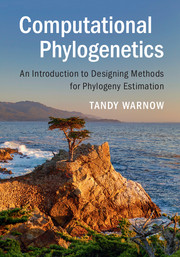Book contents
- Frontmatter
- Dedication
- Contents
- Preface
- Glossary
- Notation
- PART I BASIC TECHNIQUES
- PART II MOLECULAR PHYLOGENETICS
- Appendix A Primer on Biological Data and Evolution
- Appendix B Algorithm Design and Analysis
- Appendix C Guidelines forWriting Papers About Computational Methods
- Appendix D Projects
- References
- Index
Appendix C - Guidelines forWriting Papers About Computational Methods
Published online by Cambridge University Press: 26 October 2017
- Frontmatter
- Dedication
- Contents
- Preface
- Glossary
- Notation
- PART I BASIC TECHNIQUES
- PART II MOLECULAR PHYLOGENETICS
- Appendix A Primer on Biological Data and Evolution
- Appendix B Algorithm Design and Analysis
- Appendix C Guidelines forWriting Papers About Computational Methods
- Appendix D Projects
- References
- Index
Summary
Becoming a good writer is tremendously important, for many reasons. The most obvious one is that your papers will be easier to understand and this will help you get published and also contribute to the research field. However, in addition, being a good writer will also help you find mistakes in your work, which is perhaps even more important!
There are many ways to write well, and you should find your own style. However, all good scientific writing should have the following properties:
• clarity of exposition, so that both you and the reader understand what you've done and can draw correct inferences from the data;
• reproducibility, so that the experiment can be performed by someone else, using the exact same methods and data;
• rigor, so that what you infer makes sense; and
• scientific relevance, so that what you generate is relevant to some real data analysis.
To become a good writer, you should read the scientific literature as much as you can, and note what you like and don't like about each paper, and why. Extensive reading helps in terms of developing a good writing style, and also developing skills in designing and doing experiments that are convincing and appropriate. It's also very good practice to read the supplementary materials of all the papers you like, because often it's only in the supplement that you will find out the details that are the most important. For that matter, some journals make it quite difficult to provide sufficient detail, due to space limitations, and may not even make it feasible to provide supplementary materials on the journal's website. So, as you read, develop a sense of how the different journals enable or discourage reproducibility. It may be that this will end up informing your thoughts on where you wish to publish.
It should be obvious that any paper you want to write should be written well, with a clear introduction that provides a context for the study and engages the reader, a discussion of what was done and why, the observations that you made from your work, detailed discussion of what the observations suggest and how they relate to the rest of the scientific literature, and – of course – conclusions.
- Type
- Chapter
- Information
- Computational PhylogeneticsAn Introduction to Designing Methods for Phylogeny Estimation, pp. 327 - 330Publisher: Cambridge University PressPrint publication year: 2017



